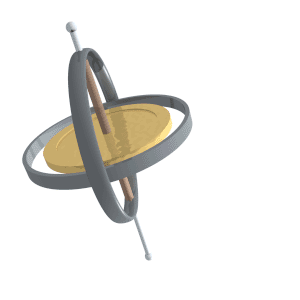Calenders
A calender is meant for longer times than a natural day.
All invented calendars are based on natural time units.
The key time units used on Earth are as follows.
- A tropical year. That is the repetition time of the seasons on Earth.
During that time the earth travels in its orbit around the sun.- The lunar month, synodic month or lunation.
It is the average time from new moon to the next new moon.
In the mean time, the moon shows all its phases.- The natural day or mean solar day, based on the average time of a day and night.
It concerns the rotation of the earth around its axis relative to the sun.- The week of seven days and nights connected with the biblical story of creation.
Unfortunately, no integers. This makes creating a calendar tricky.
1 tropical year = 365·2422 natural days 1 lunation = 29·53 natural days 1 tropical year = 12·37 lunations
because in a calendar does not fit a part of a natural day.
In principle, all other units of time can be used as well.
For periods longer than one year, the cycle of Meton and
the Saros period can be used.The Metonic cycle is the least common multiple ofFor much longer periods than a year the precession period of the Earth's axis can be used:
a tropical year and synodic month.
This period is 19 years = 235 lunations = 6940 days and nights.
This period is used to construct the Jewish calendar.
The Saros period lasts 223 lunations equal to 18 years + x days.
x = 10 when the the Saros contains 4 leap years.
x = 11 when the the Saros contains 5 leap years.
After each Sarosperiod sun and moon eclipses
repeat themselves in the same way every time.
the earth's axis describes a conical surface in 25,770 years.
38,8 of these periods go in a million years.Extreme long times can be expressed in the cosmic year or the galactic year.
The dot below represents the earth.
It lasts about 240 million years. Its is the time our solar system needs
to make one revolution around the center of the Milky Way.
Possibly half lives of radioactive element could be used,
because they are natural time units as well. However they are never applied.
Kinds of calendersAll existing calenders and used units are discussed in Wikipedia.
- The Julian day counter start at high noon in Greenwich near London in England.
It is used by astronomers.
Easily a time difference can be calculated by distracting two dates.
- The solar calender: it is the usual calender in western countries,
the Gregorian calender; Bahai, Thai, India and Iran.- The lunar calender is used by Islam and Hindu.
- De lunisolar calender is Jewish and Chinese.
So repeat in this site is superfluous.
A universal calender
People tried to construct a universal calender. It met many objections.
Some of them
- The seven days week has to be conserved for all monotheists.
- Islam forbids leap time units.
An eternal calender
A lot of them you can find at the internet.
Sundials and monoliths
A sun dial shows you the time, provided that the sun makes a shadow of the central arrow.
a (prehistorical) monolith, a landscape calender or stone circle gives you the date.
A stone circle can be a landscape calender
Seen from a specific point of observation on land, the sunrise changes of direction
and morning time every day. This principle is use in stone circles.
Famous is the one of Stonehenge:
Who has unobstructed view, can make his own stone circle.
For any latitude on Earth the stone circle is different.
Each day the local rise and sunset should be marked.
At the beginning of summer the sun rises about north east.
At the beginning of the fall and spring, the sun rises exactly in the east (equinox)and
at the beginning of winter the sun rises about south east.
Most known stone circles are from prehistoric times.
It is far from sure, that they all were used for astronomical observatories.
In time on other planets other calenders will be used,
adapted to the numerical values of the units there.
Astronomy Sciences

